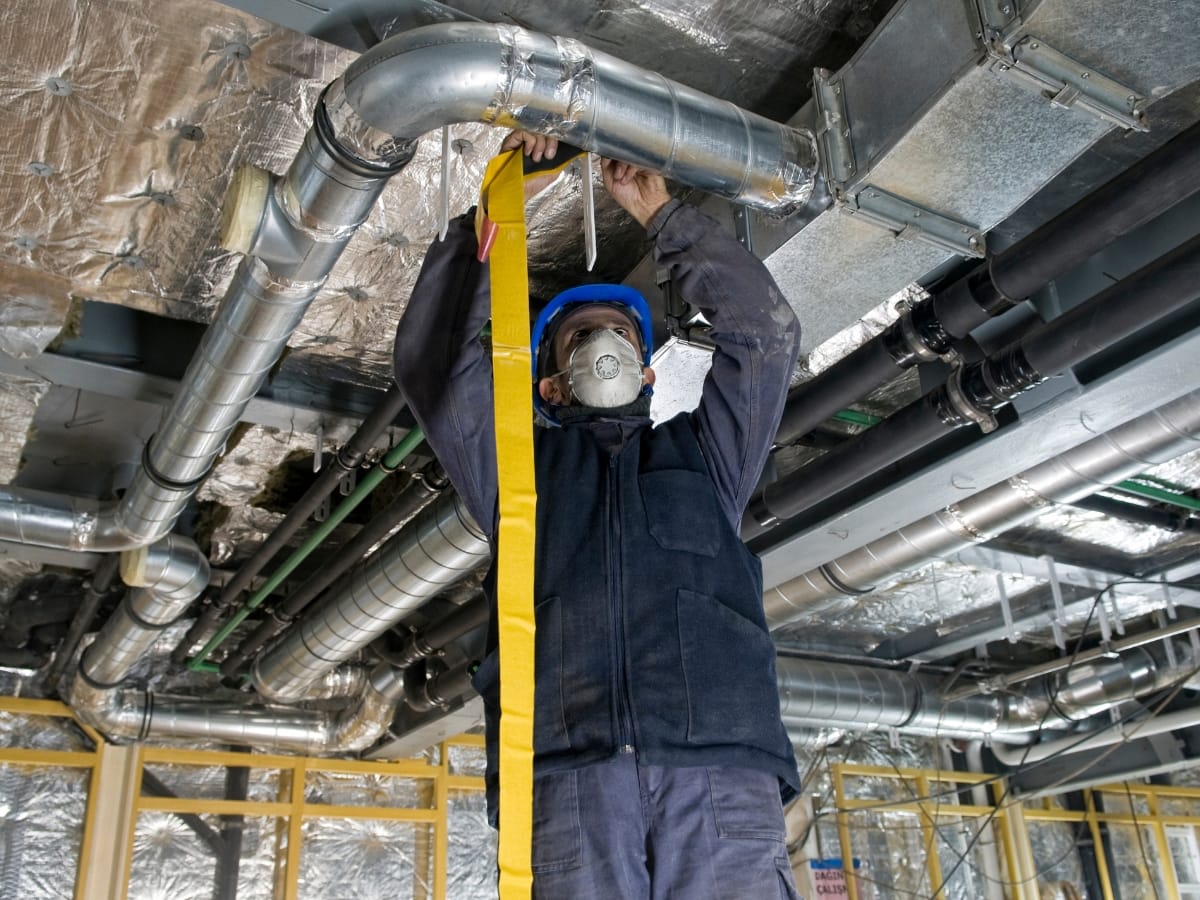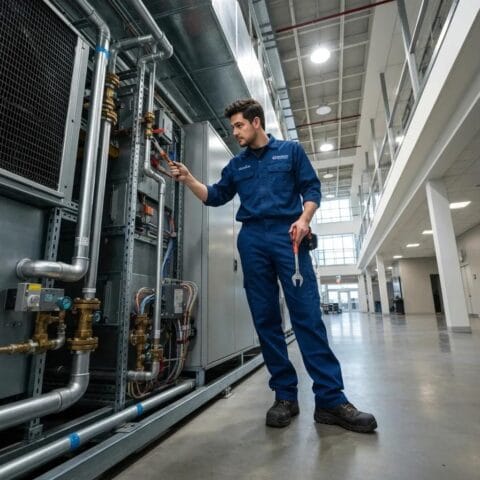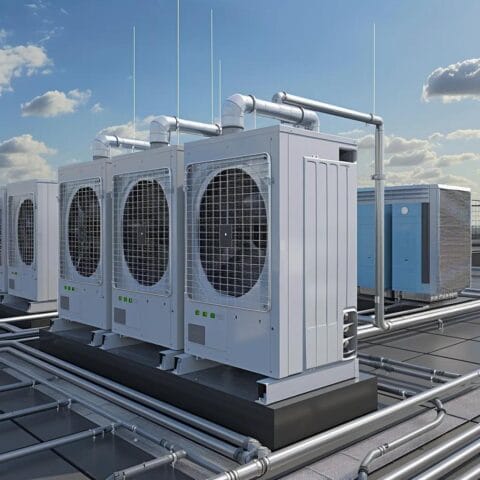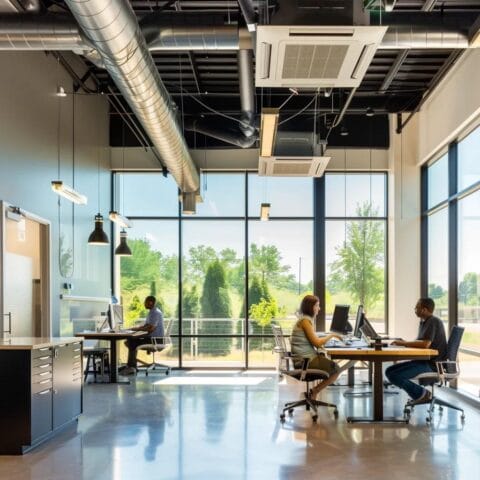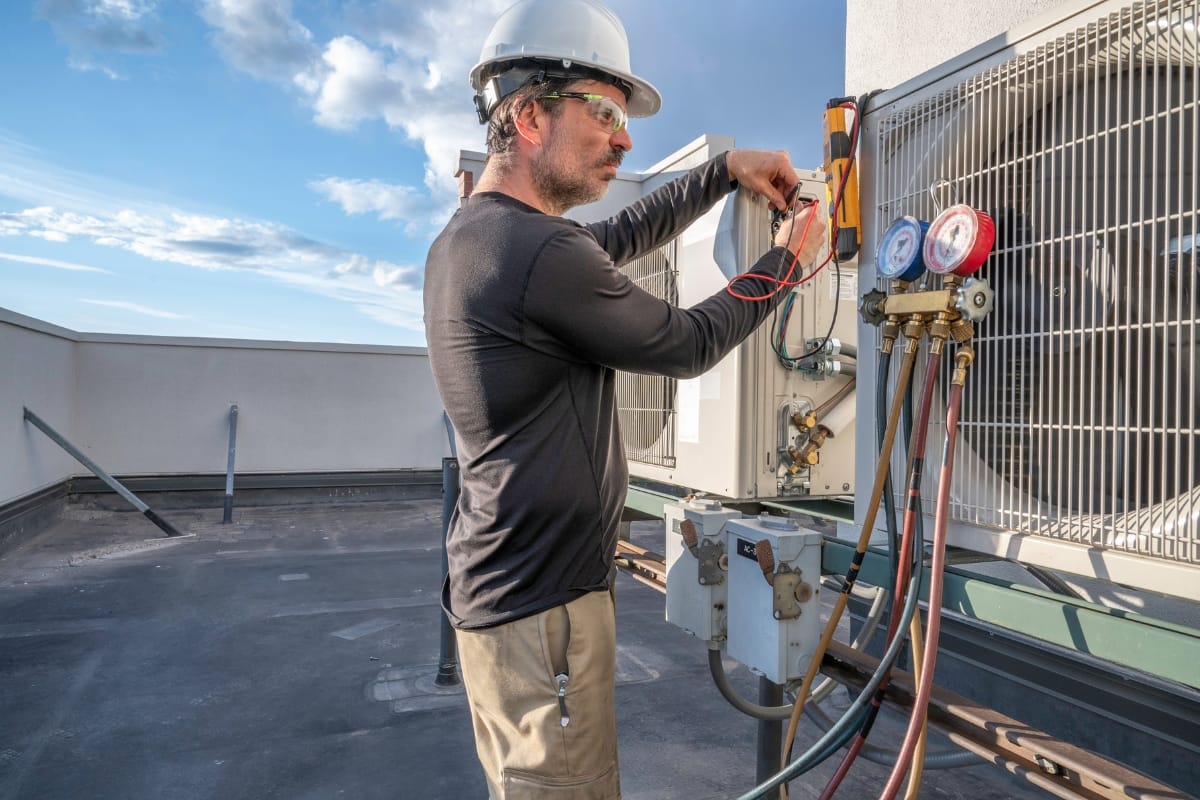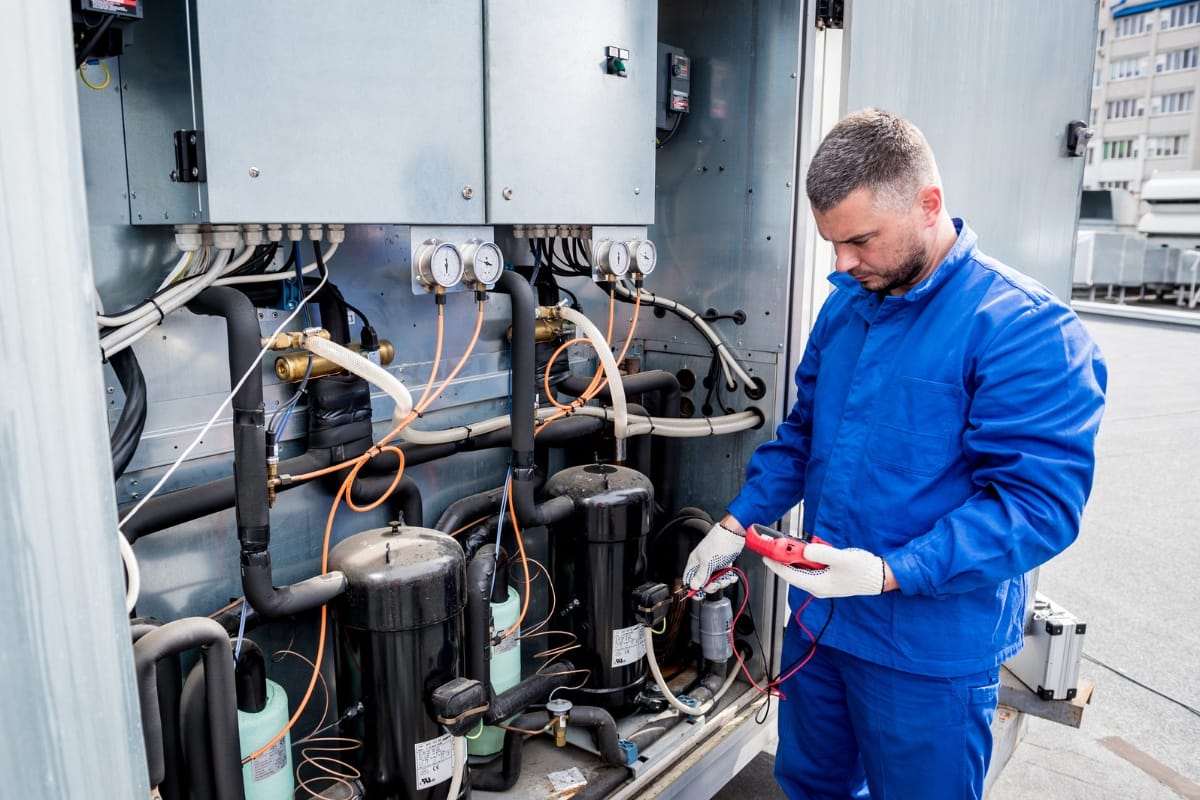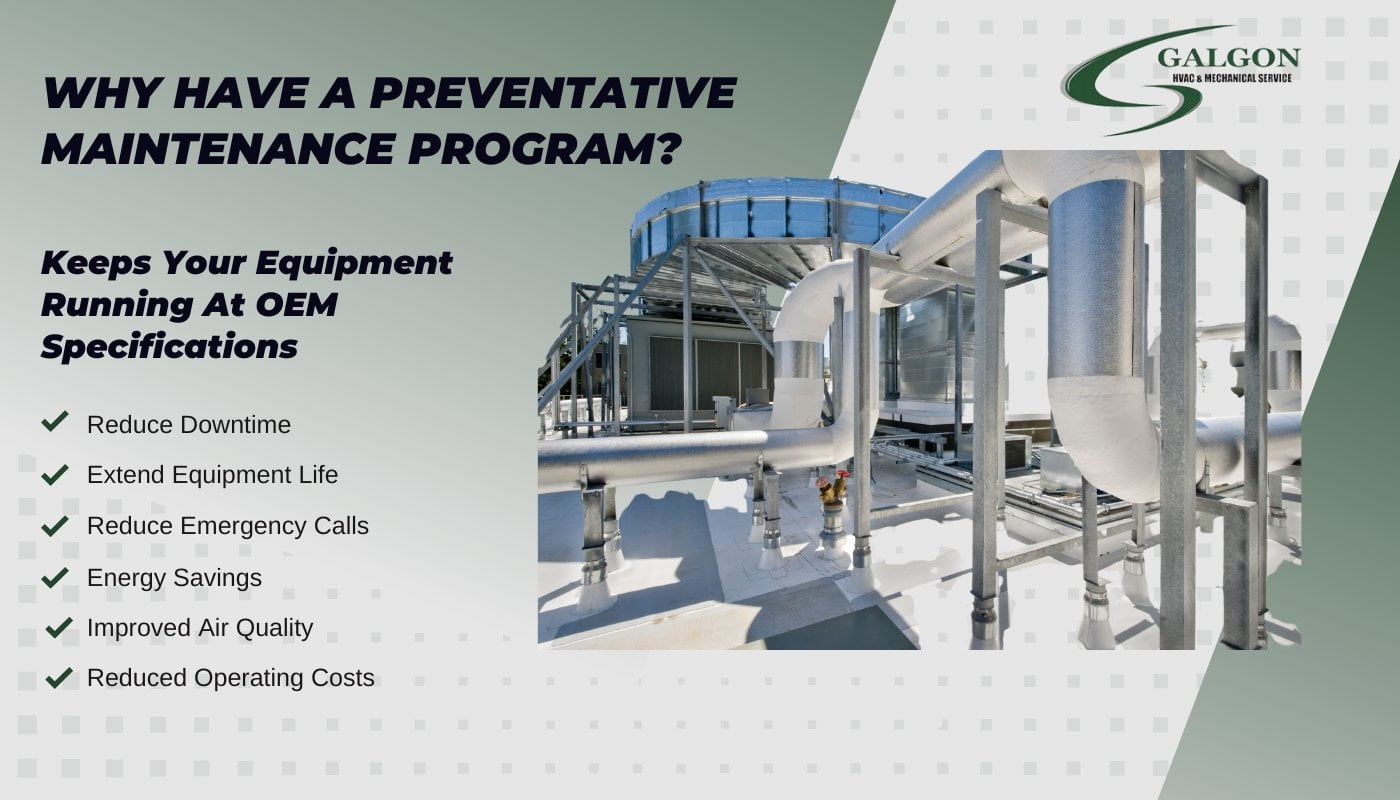Are you looking to boost your commercial office building’s profitability while reducing its environmental impact? This article explores effective energy efficiency strategies that can significantly increase your return on investment. We’ll cover key areas for improvement, how to develop a comprehensive energy strategy and the role of technology in energy management. By implementing these strategies, you’ll not only cut operational costs but also enhance your building’s value and appeal to tenants. Learn how to maximize your ROI through smart energy efficiency measures tailored for commercial office buildings.
How Energy Efficiency in Commercial Office Buildings Boosts Your Bottom Line
Understanding Energy Efficiency in Commercial Office Buildings
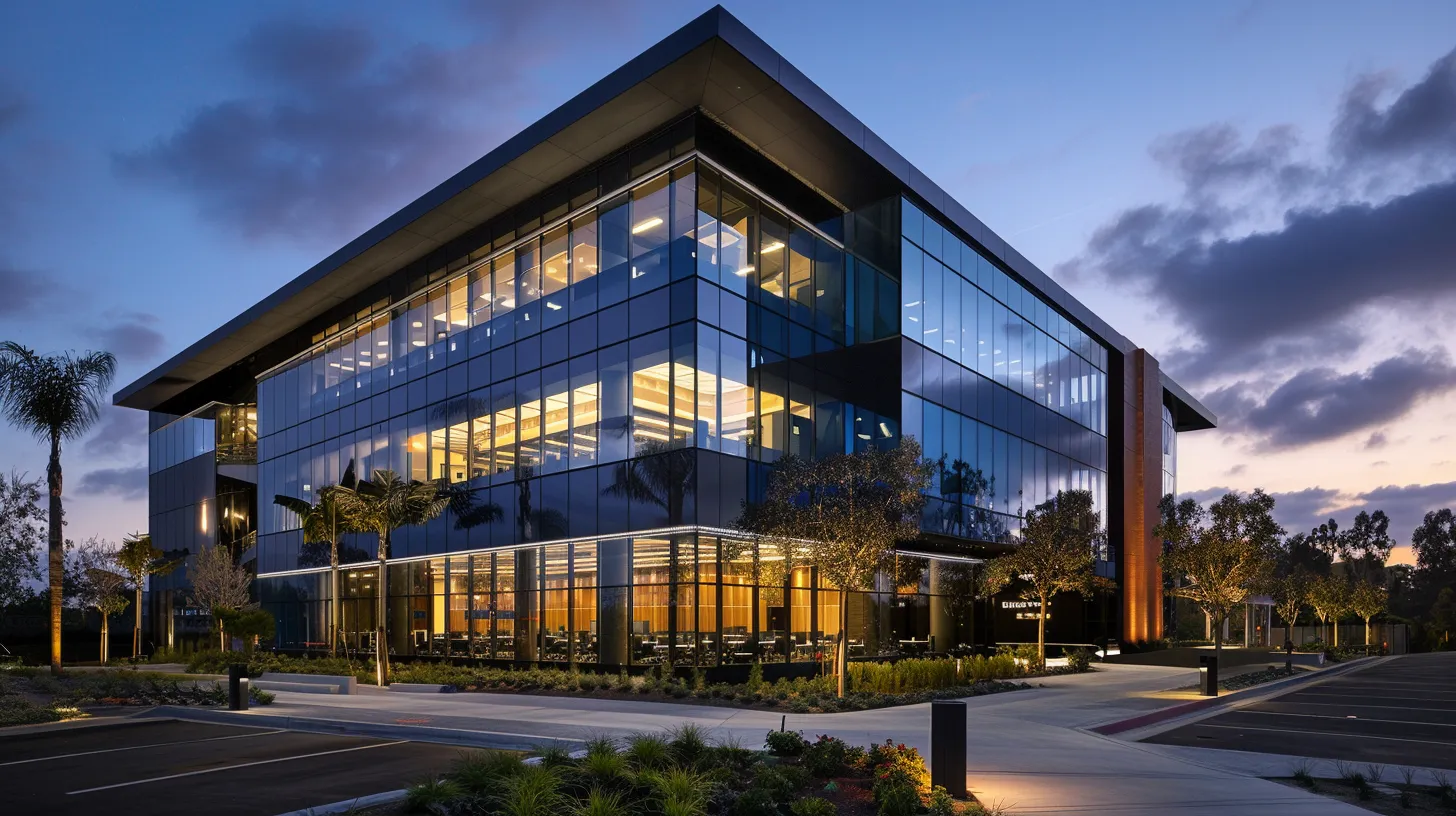
Energy efficiency in commercial office buildings is crucial for maximizing return on investment. This section explores key aspects, including the definition and benefits of energy efficiency, common technologies used in office spaces, including those from HVAC industries, and regulatory standards impacting energy use in the United States. Understanding these elements helps building owners and managers optimize their climate control systems, reduce water consumption, and meet evolving energy demands.
Defining Energy Efficiency and Its Benefits
Energy efficiency in commercial office buildings refers to the practice of reducing energy consumption while maintaining or improving the comfort and functionality of the space. This concept is particularly relevant in areas like Buckhead and Midtown Atlanta, where large office infrastructure dominates the skyline. By implementing energy-efficient strategies, businesses can significantly lower their operational costs and increase their return on investment.
The benefits of energy efficiency extend beyond cost savings, impacting various sectors including insurance and restaurant industries. Improved energy performance can lead to enhanced indoor environmental quality, increased property value, and reduced environmental impact. For commercial buildings in Atlanta’s bustling districts, these advantages translate to greater tenant satisfaction, lower vacancy rates, and a competitive edge in the market.
Common Energy Efficiency Technologies
Commercial office buildings in Atlanta, including the iconic Midtown Plaza, utilize various energy efficiency technologies to reduce energy consumption and air pollution. Advanced HVAC systems, coupled with smart building management systems, optimize energy use while maintaining comfort levels. These technologies contribute to economic growth by reducing operational costs and promoting sustainable practices.
Energy-efficient lighting solutions, such as LED fixtures and occupancy sensors, significantly decrease electricity usage in office spaces. Natural gas-powered combined heat and power systems provide both electricity and thermal energy, further enhancing overall energy efficiency. The integration of these technologies creates a synergistic effect, maximizing energy savings and improving the building’s environmental performance:
Regulatory Standards Impacting Energy Use
Regulatory standards in the United States significantly impact energy use in commercial office buildings. The Department of Energy establishes guidelines for energy consumption, incentivizing building owners to implement efficient systems. Galgon HVAC, a leading provider in Atlanta, helps businesses comply with these regulations while optimizing their energy usage.
The European Union’s energy efficiency directives have influenced global standards, including those in the U.S. These regulations focus on reducing overall energy consumption, with particular emphasis on lighting systems. By adopting advanced technologies and practices, commercial buildings can meet these standards and achieve substantial energy savings.
Energy efficiency in commercial buildings is complex. Let’s explore where improvements can make the biggest impact.
Identifying Key Areas for Improvement
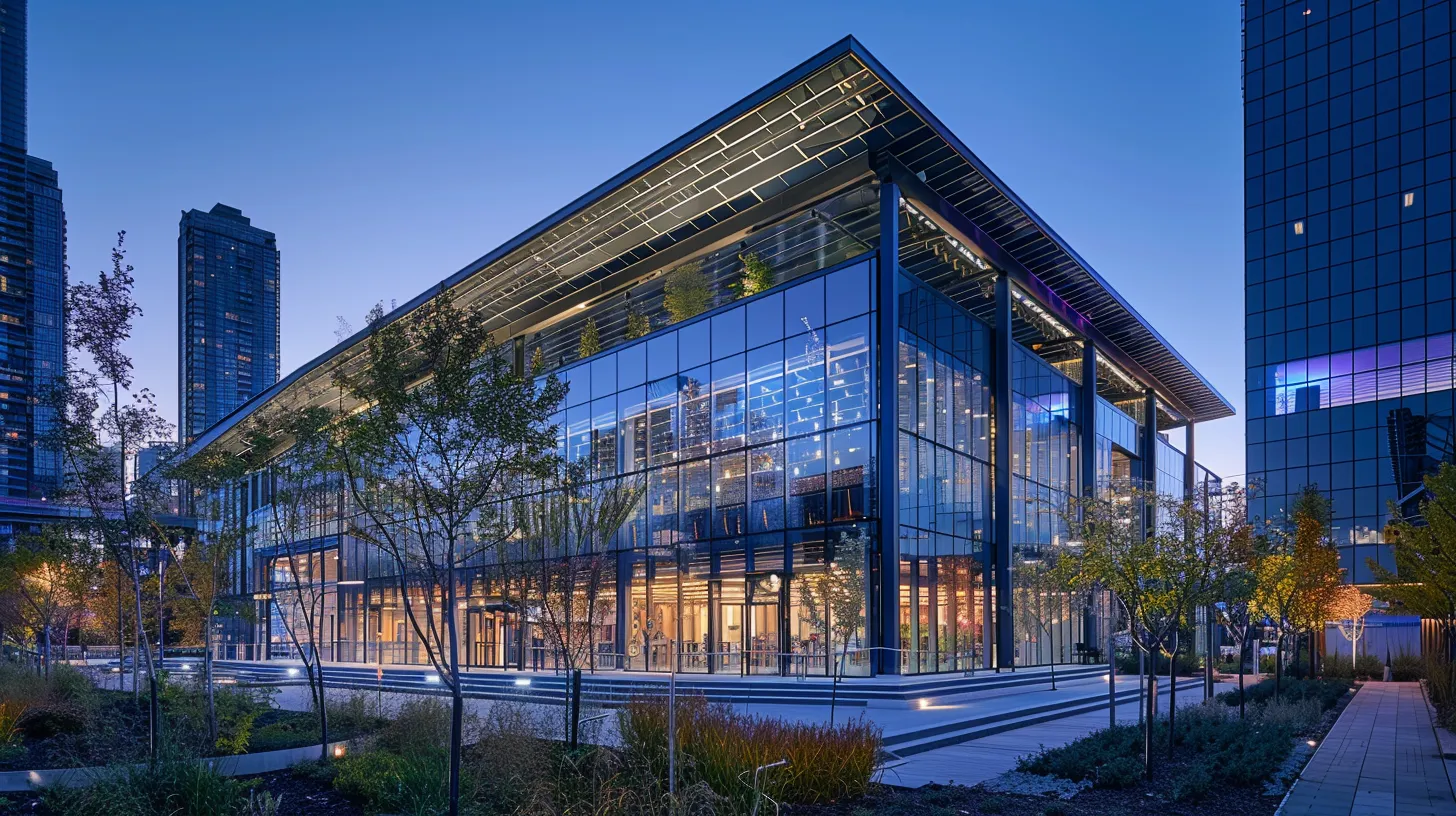
Identifying key areas for improvement in commercial office buildings is crucial for maximizing energy efficiency and return on investment. This section explores strategies for assessing energy consumption patterns, evaluating HVAC systems and controls, implementing smart lighting solutions, and upgrading building envelopes for insulation. These approaches help property owners optimize their commercial rental spaces, enhance energy conservation, and align with environmental and energy study institute guidelines.
Assessing Energy Consumption Patterns
Assessing energy consumption patterns in commercial office buildings involves analyzing electricity usage, temperature fluctuations, and peak demand periods. The International Energy Agency recommends conducting comprehensive energy audits to identify areas of high consumption and potential savings. These assessments help building managers understand how energy is distributed across various systems, including HVAC, lighting, and electric vehicle charging stations.
By examining historical data and real-time monitoring, property owners can pinpoint inefficiencies and implement targeted solutions to reduce costs. This approach allows for the optimization of energy-intensive processes, such as adjusting temperature setpoints during off-hours or scheduling electric vehicle charging during low-demand periods. The resulting insights enable informed decision-making for energy-saving investments and operational improvements.
Evaluating HVAC Systems and Controls
Evaluating HVAC systems and controls is crucial for enhancing energy security and mitigating climate change in commercial office buildings. Building managers should conduct regular assessments of their HVAC equipment, focusing on efficiency ratings, age, and performance metrics. This evaluation process helps identify opportunities for upgrading to more energy-efficient systems, reducing greenhouse gas emissions, and improving overall building performance.
Advanced HVAC controls, such as smart thermostats and occupancy sensors, play a vital role in optimizing energy consumption and enhancing consumer comfort. These technologies allow for precise temperature management and automatic adjustments based on occupancy patterns. By implementing such controls, building owners can significantly reduce energy waste, lower operational costs, and contribute to climate change mitigation efforts, aligning with home energy-saving principles.
Implementing Smart Lighting Solutions
Smart lighting solutions in commercial office buildings offer significant energy savings and improved occupant comfort. These systems integrate sensors, controls, and energy-efficient LED fixtures to optimize lighting based on occupancy, daylight availability, and specific task requirements. In manufacturing facilities and real estate properties, smart lighting can reduce energy consumption by up to 80%, contributing to substantial cost savings and improved return on investment.
Advanced lighting controls can be seamlessly integrated with other building systems, such as HVAC and water heating, to create a comprehensive energy management strategy. For instance, occupancy sensors that control lighting can also adjust temperature settings and manage vehicle charging stations, maximizing overall energy efficiency. This holistic approach not only reduces operational costs but also enhances the property’s value and appeal to potential tenants or buyers in the competitive real estate market.
Upgrading Building Envelope for Insulation
Upgrading the building envelope for improved insulation is a critical step in enhancing energy efficiency and reducing risks associated with temperature fluctuations. By implementing high-quality insulation materials and sealing air leaks, commercial office buildings can significantly decrease their heating and cooling loads, leading to reduced energy consumption and lower operating costs. This approach also supports preventative maintenance efforts by minimizing stress on HVAC systems and extending their lifespan.
The benefits of an upgraded building envelope extend beyond energy savings, impacting various aspects of commercial operations. For instance, improved insulation can enhance the comfort and productivity of warehouse workers, reduce the need for frequent truck maintenance due to extreme temperature exposure, and support electrification initiatives by reducing the overall energy demand of the building. These improvements contribute to a more sustainable and cost-effective operation, aligning with long-term business goals and environmental responsibilities.
Developing an Energy Efficiency Strategy
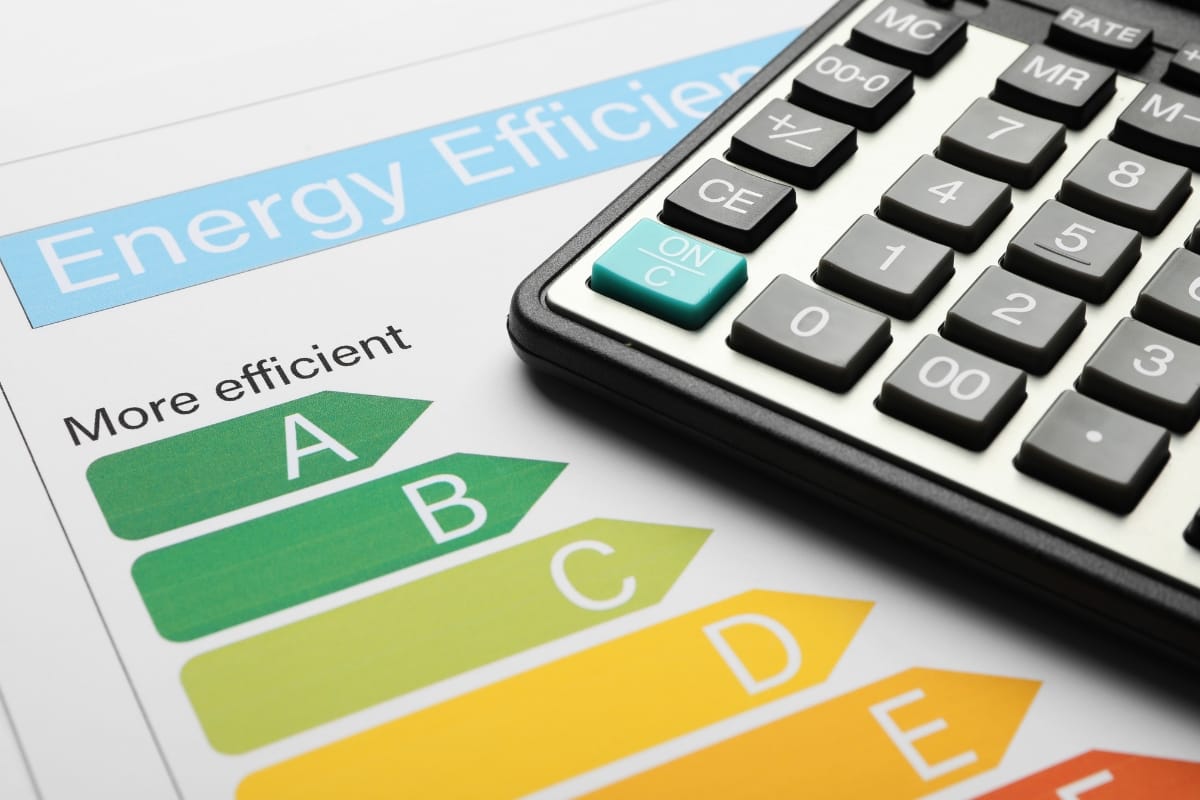
Developing an effective energy efficiency strategy for commercial office buildings requires a systematic approach. This process involves setting clear energy usage goals, conducting thorough energy audits, and creating comprehensive energy management plans.
By focusing on these key areas, building managers can optimize their coworking spaces, reduce greenhouse gas emissions, and improve supply chain efficiency. This strategic approach enhances overall building performance and maximizes return on investment through reduced energy consumption and improved inventory management.
Setting Clear Energy Usage Goals
Setting clear energy usage goals is crucial for commercial office buildings seeking to maximize ROI through energy efficiency. Building managers should establish specific, measurable targets for reducing energy consumption in areas such as oil usage, HVAC systems, and lighting. These goals should align with industry benchmarks and take into account unique features of the property, such as those found in the Ponce City Market or other office building projects in Atlanta.
When setting energy usage goals, property owners should consider both short-term and long-term objectives. This approach allows for immediate improvements in business spaces for rent near me, while also planning for future enhancements in small business spaces for rent. Goals should be regularly reviewed and adjusted based on progress and changing market conditions, ensuring continuous improvement in energy efficiency:
- Establish baseline energy consumption
- Set specific reduction targets for each energy system
- Identify key performance indicators (KPIs) to track progress
- Align goals with industry standards and local regulations
- Incorporate tenant engagement strategies to support goal achievement
Conducting an Energy Audit
Conducting an energy audit is a critical step in developing an effective energy efficiency strategy for commercial office buildings. Professional auditors analyze energy consumption patterns across various systems, including HVAC, lighting, and refrigeration units, to identify areas of inefficiency and potential savings. This comprehensive assessment helps building managers understand their current carbon footprint and develop targeted strategies for improvement.
Energy audits in commercial spaces often reveal unexpected opportunities for optimization, particularly in retail environments and electric car charging stations. By examining the performance of HVAC systems and refrigerators, auditors can recommend upgrades or modifications that significantly reduce energy consumption. These insights enable property owners to make informed decisions about energy-saving investments, ultimately leading to reduced operational costs and improved ROI:
- Evaluate energy consumption of major building systems
- Identify inefficiencies in HVAC and refrigeration equipment
- Assess lighting and electrical systems for potential upgrades
- Analyze energy usage patterns in retail spaces
- Recommend energy-saving measures tailored to the building’s specific needs
Creating an Energy Management Plan
Creating an energy management plan is essential for commercial office buildings to optimize their energy efficiency and boost ROI. This comprehensive strategy integrates internet-based monitoring systems, economic analysis tools, and engine performance metrics to track and improve energy consumption patterns. By leveraging data-driven insights, building managers can make informed decisions that enhance the overall economy of their operations.
An effective energy management plan considers various factors, including climate-specific challenges and global economic trends. It outlines specific goals, timelines, and responsibilities for implementing energy-saving measures across different building systems. The plan should be flexible enough to adapt to changing technologies and market conditions, ensuring long-term sustainability and cost-effectiveness:
Leveraging Technology for Energy Management
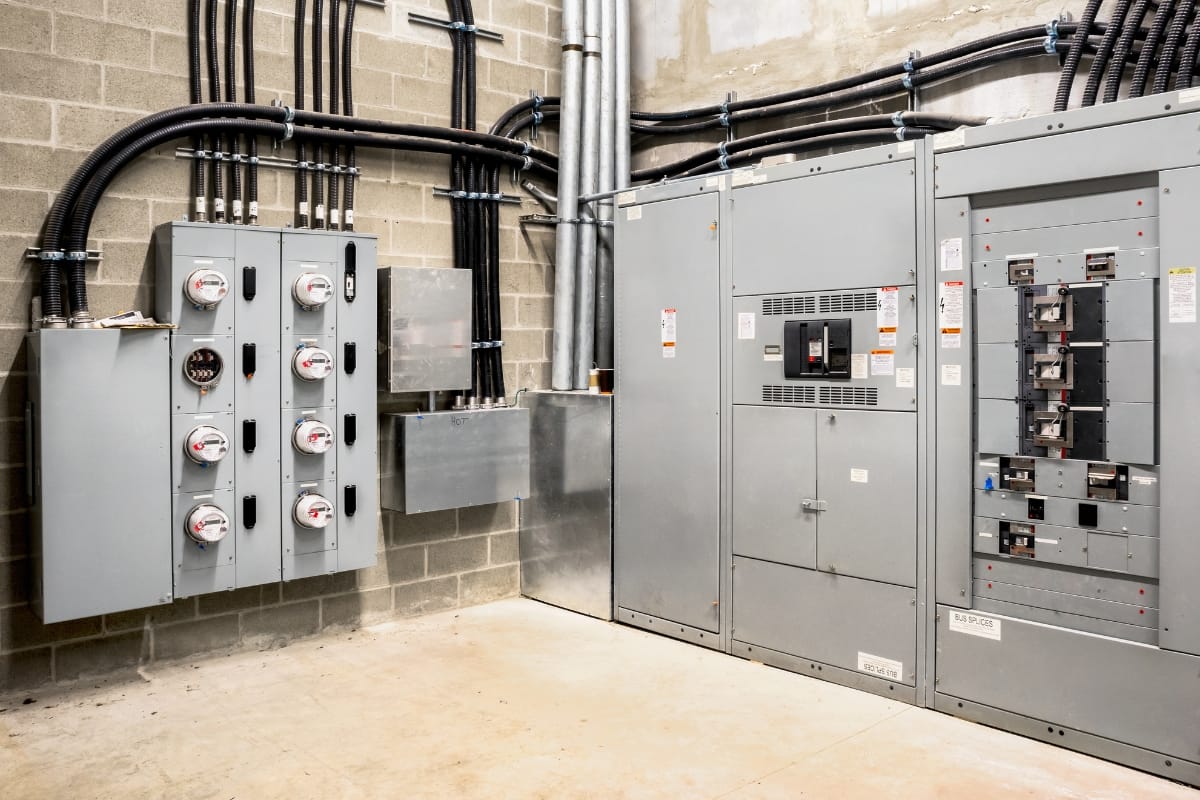
Leveraging technology is crucial for effective energy management in commercial office buildings, especially in Atlanta’s dynamic real estate market. Building Management Systems, energy monitoring tools, and smart devices offer powerful solutions for optimizing HVAC systems, including heat pumps and electric motors. These technologies help property managers address climate change concerns while maximizing ROI on their leases through improved efficiency and reduced energy consumption.
Implementing Building Management Systems
Building Management Systems (BMS) play a crucial role in optimizing energy efficiency for commercial office buildings, including virtual office spaces. These advanced systems integrate HVAC controls, lighting, and other building functions to reduce carbon emissions and minimize fossil fuel consumption. By automating and monitoring various building operations, BMS significantly improves efficient energy use while reducing the HVAC environmental impact.
Modern BMS technologies offer real-time data analytics and predictive maintenance capabilities, enabling property managers to proactively address energy inefficiencies. These systems can optimize HVAC operation based on occupancy patterns, weather conditions, and energy pricing, resulting in substantial cost savings and improved ROI for building owners. The implementation of BMS also supports sustainable building practices, aligning with growing environmental concerns and regulatory requirements:
Utilizing Energy Monitoring Tools
Energy monitoring tools play a crucial role in maximizing ROI for commercial office buildings, including those available for rent. These advanced technologies enable property managers to track and analyze energy consumption patterns, identify areas of high methane emissions, and optimize the performance of electric generators. By providing real-time data on heat distribution and energy usage, these tools empower building owners to make informed decisions that reduce operational costs and improve overall energy efficiency.
The implementation of energy monitoring systems in office buildings has proven highly effective in reducing energy waste and improving tenant satisfaction. These tools can detect anomalies in HVAC systems, lighting, and other building technologies, allowing for prompt maintenance and preventing costly breakdowns.
By leveraging this data, property managers can implement targeted energy-saving strategies, such as adjusting heating schedules or upgrading inefficient equipment, ultimately leading to significant cost savings and more attractive office space for potential tenants.
Exploring Automation and Smart Devices
Automation and smart devices are revolutionizing energy management in commercial office buildings, offering significant opportunities for renovation and improved fuel efficiency. These technologies enable precise control of HVAC systems, lighting, and other energy-consuming equipment, adapting to real-time occupancy and environmental conditions. By integrating smart sensors and IoT devices, property managers can optimize gas and electricity usage, reducing overall energy consumption and operational costs.
For businesses seeking industrial space for rent near them, buildings equipped with advanced automation systems present attractive options for energy-conscious tenants. Smart thermostats, occupancy sensors, and automated lighting controls work in tandem to create a responsive environment that minimizes energy waste. These technologies not only enhance the building’s energy performance but also contribute to a more comfortable and productive workspace, ultimately improving the property’s value and appeal in the competitive commercial real estate market.
Financial Incentives and Return on Investment

Financial incentives and return on investment play a crucial role in implementing energy efficiency strategies for commercial office buildings. This section explores methods for calculating ROI on energy projects, available grants and tax incentives, and case studies of successful implementations. By leveraging smart building technologies and addressing pollution concerns, property owners can align with goals while maximizing their investments.
Calculating ROI on Energy Efficiency Projects
Calculating ROI on energy efficiency projects for commercial office buildings, including spaces for lease near me, involves analyzing the initial investment, energy savings, and long-term benefits.
Property managers of iconic structures must consider factors such as reduced carbon dioxide emissions, decreased primary energy consumption, and the potential for integrating renewable energy sources. This comprehensive approach ensures a thorough evaluation of the project’s financial viability and environmental impact.
To accurately determine ROI, building owners should track key performance indicators over time, such as energy usage reduction, cost savings, and improved tenant satisfaction. These metrics provide valuable insights into the effectiveness of implemented strategies and help justify further investments in energy-efficient technologies. By prioritizing projects with the highest potential returns, property managers can maximize their ROI while contributing to sustainability goals:
- Assess initial investment costs
- Calculate projected energy savings
- Evaluate impact on carbon dioxide emissions
- Consider integration of renewable energy sources
- Monitor key performance indicators
- Analyze long-term financial and environmental benefits
Available Grants and Tax Incentives
Commercial office buildings in Georgia, including those in West Midtown, can benefit from various grants and tax incentives to improve energy efficiency. The state offers programs that subsidize the cost of upgrading HVAC systems and implementing energy-saving measures, reducing the initial investment for property owners. These incentives often cover a significant portion of project costs, making energy efficiency upgrades more accessible and financially attractive.
Federal tax credits are available for commercial buildings that achieve substantial energy reductions, potentially offsetting the price of improvements. In Atlanta, where coal-fired power plants once dominated, building owners who transition to cleaner energy sources may qualify for additional incentives. These programs not only benefit property managers but also contribute to reduced energy costs for passengers using public transportation hubs located in commercial districts.
Case Studies of Successful Implementations
Successful implementations of energy efficiency strategies in commercial office buildings have demonstrated significant returns on investment. One notable case study involves a green building project in Atlanta’s commercial property sector, where comprehensive energy management systems were installed. The property owner reported a 30% reduction in energy consumption within the first year, resulting in substantial cost savings and improved tenant satisfaction.
Another example showcases the transformation of a traditional office complex into a high-performance greenhouse-inspired workspace. By integrating advanced energy management in commercial buildings, including smart HVAC controls and renewable energy sources, the property achieved LEED Platinum certification. This strategic management approach not only reduced operational costs but also increased the building’s market value by 15%, attracting environmentally conscious tenants and commanding premium lease rates.
Promoting a Culture of Energy Efficiency
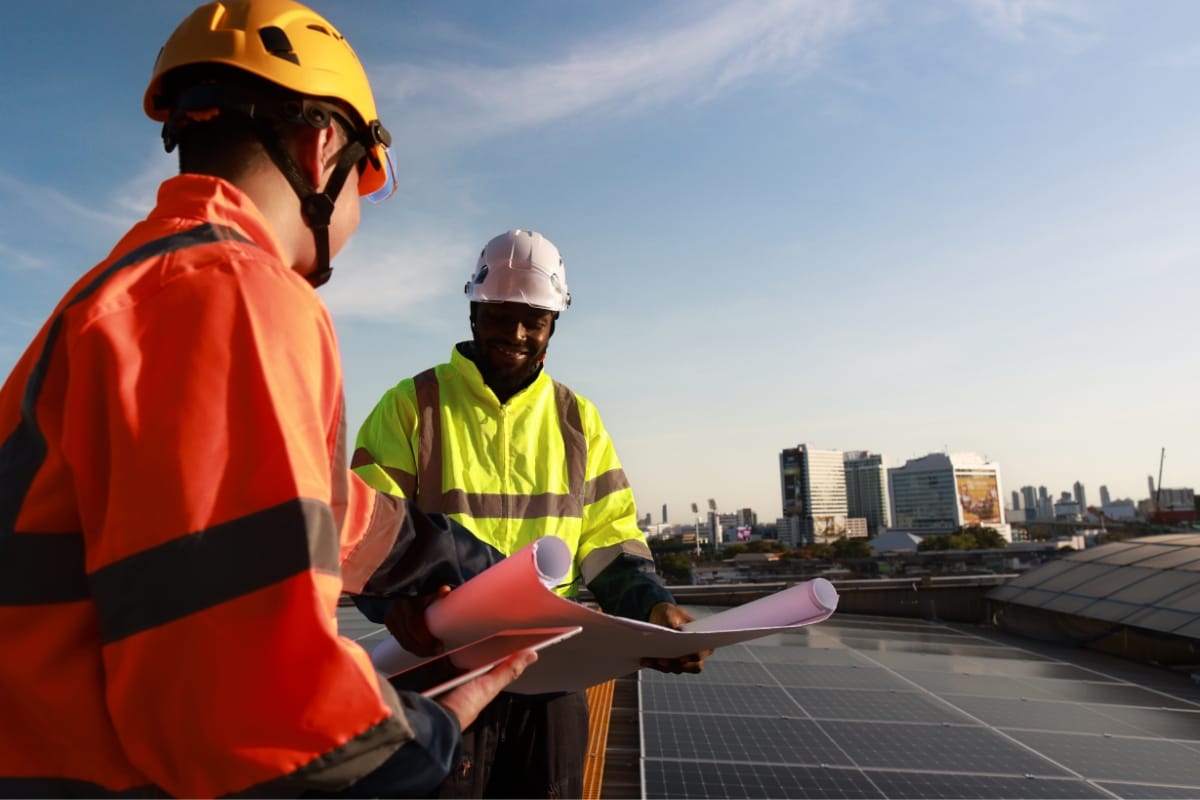
Promoting energy efficiency in commercial office buildings requires a cultural shift. This section explores strategies for engaging employees in energy conservation, implementing training programs for sustainable practices, and tracking progress toward energy development goals. By fostering a culture of efficiency, building managers can maximize ROI and contribute to Atlanta’s sustainable future.
Engaging Employees in Energy Conservation
Engaging employees in energy conservation efforts is crucial for commercial office buildings in downtown Atlanta. Property managers can implement cogeneration systems and energy storage solutions, encouraging staff to actively participate in sustainability initiatives. By involving employees in the decision-making process for energy-saving measures, buildings can achieve significant reductions in energy consumption and operational costs.
Promoting the use of public transport among employees can further enhance energy efficiency in commercial office spaces. Building managers can incentivize sustainable commuting options, such as offering subsidized transit passes or installing electric vehicle charging stations. These initiatives not only reduce the carbon footprint associated with employee transportation but also contribute to the overall energy efficiency culture within the organization.
Training Programs for Sustainable Practices
Training programs for sustainable practices are essential for commercial office buildings in Atlanta’s Old Fourth Ward district to achieve net zero emissions. These programs educate staff on conducting energy audits, optimizing resource usage, and implementing car-free initiatives. By equipping employees with the knowledge and skills to identify and address energy inefficiencies, building managers can significantly reduce operational costs and improve ROI.
Effective training initiatives often incorporate hands-on workshops and real-world simulations to demonstrate the impact of sustainable practices. For instance, employees can learn to analyze energy consumption patterns, identify areas for improvement, and implement energy-saving measures in their daily routines. This practical approach not only enhances understanding but also fosters a sense of ownership and commitment to energy efficiency goals among staff members.
Tracking Progress and Celebrating Achievements
Tracking progress in energy efficiency initiatives is crucial for commercial office buildings and data centers to maximize ROI. Building managers in Atlanta utilize advanced monitoring systems to measure energy consumption patterns and identify areas for improvement. These systems provide real-time data on office equipment usage, HVAC performance, and overall energy consumption, enabling property owners to make informed decisions and continuously optimize their energy efficiency strategies.
Celebrating achievements in energy efficiency not only boosts morale but also reinforces the importance of sustainable practices among employees and tenants. Commercial buildings in Midtown Atlanta often organize recognition events to highlight successful energy-saving projects and individual contributions. These celebrations can include showcasing reduced energy bills, improved building performance ratings, or progress toward net-zero goals. By publicly acknowledging these accomplishments, building managers create a positive feedback loop that encourages ongoing commitment to energy efficiency initiatives.
Frequently Asked Questions
How can energy efficiency strategies maximize ROI in commercial office buildings?
Energy efficiency strategies in commercial office buildings can maximize ROI through reduced utility costs, improved tenant satisfaction, and increased property value. Implementing smart HVAC systems, LED lighting, and proper insulation can lead to significant long-term savings and attract environmentally conscious tenants, ultimately boosting the building’s profitability.
What are the key areas for improving energy efficiency in offices?
Energy efficiency in offices can be improved by focusing on HVAC system optimization, lighting upgrades, insulation enhancements, and smart building controls. Regular maintenance, employee education on energy-saving practices, and implementing renewable energy sources also contribute to reducing overall energy consumption and costs.
How can technology be leveraged for better energy management in buildings?
Building automation systems integrate HVAC, lighting, and security controls, optimizing energy use based on occupancy and environmental conditions. Smart sensors, IoT devices, and AI algorithms analyze data to adjust settings in real-time, reducing waste and improving efficiency while maintaining comfort for occupants.
What financial incentives are available for implementing energy-efficient measures?
Several financial incentives are available for implementing energy-efficient measures in commercial buildings. These include federal tax credits, utility rebates, state and local grants, and low-interest financing options. Businesses can also benefit from reduced energy costs and increased property value through energy-efficient upgrades.
How can businesses promote a culture of energy efficiency among employees?
Businesses can promote energy efficiency by educating employees, setting clear goals, and incentivizing conservation efforts. Implementing energy-saving practices, such as turning off equipment when not in use and optimizing HVAC settings, can create a culture of sustainability while reducing operational costs.
Conclusion
Energy efficiency strategies in commercial office buildings are critical for maximizing return on investment, reducing operational costs, and enhancing property value. By implementing advanced technologies such as smart building management systems, energy monitoring tools, and efficient HVAC solutions, property owners can significantly reduce energy consumption while improving tenant comfort and satisfaction.
Trust Galgon HVAC & Mechanical Service to deliver tailored, efficient commercial HVAC solutions that boost your ROI. Contact us today at (404) 352-1500 or visit our website to fill out the form for a service request or quote and take the first step toward transforming your commercial space into an energy-efficient powerhouse.


